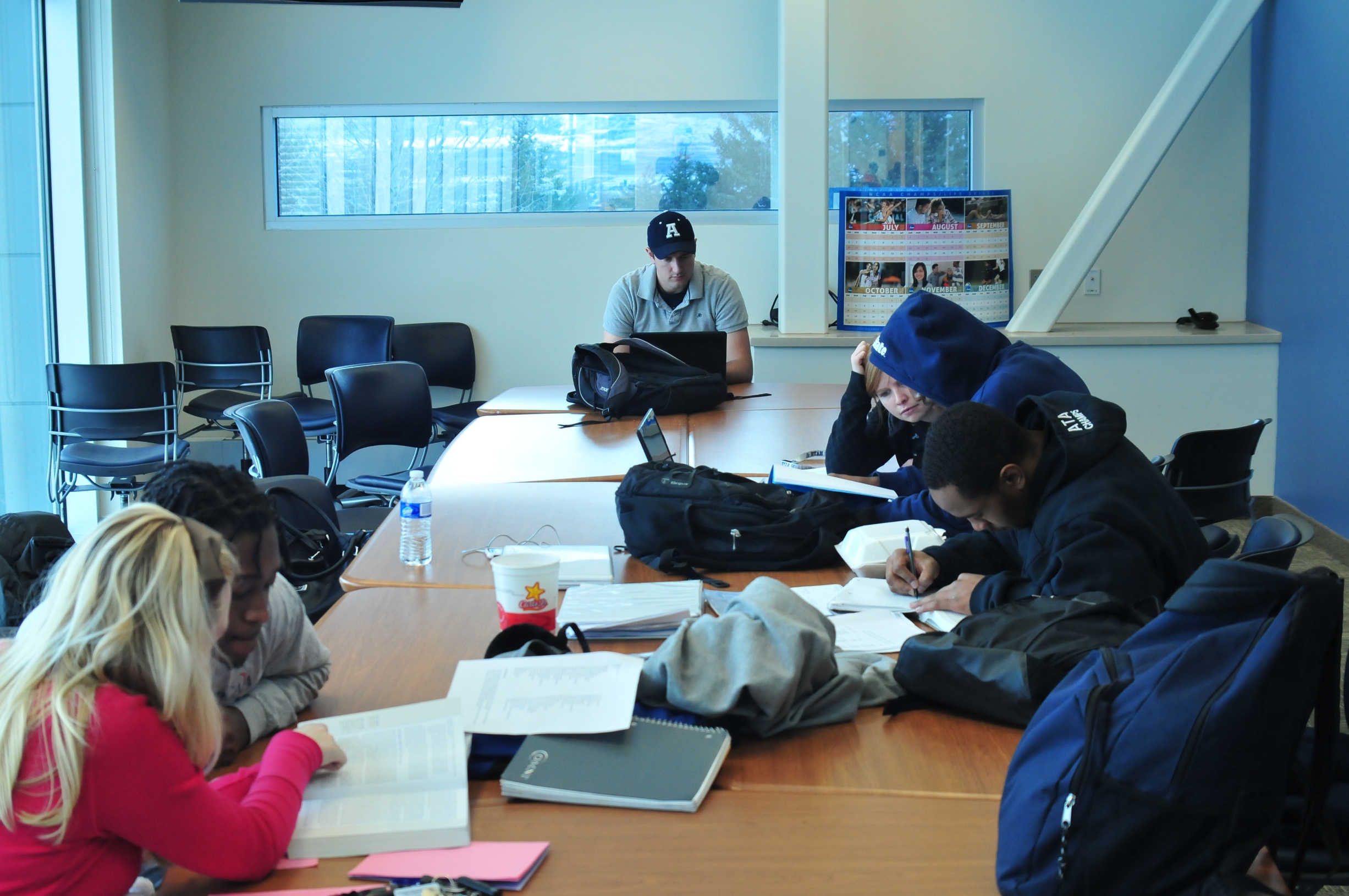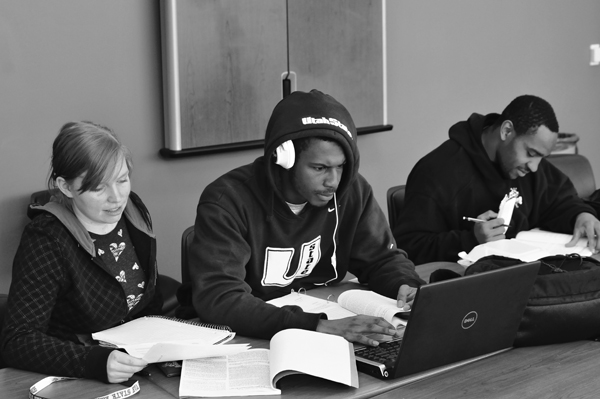Mentor program helps student-athletes succeed
Most division one schools have programs close to or with the same goals as USU’s athletic mentors program, created by the athletic department, said Lynaye Stone, the athletic department’s learning specialist.
Stone said she comes up with the program for each semester and puts together a packet of information and sources for the mentors.
She said the goal of the program is for mentors to teach study skills. There’s a difference between tutors and mentors, Stone said. Tutors help learn an individual subject. Mentors teach study skills, such as how to organize.
“The purpose is to teach them skills so they get out of the program,” Stone said. “You can earn your way back in, but really, we want to get them out.”
The mentors meet with the athletes a few times a week, to make sure they are getting everything done. The mentors also teach athletes about various study techniques and do some sort of activity with them. Stone said there are just more than 40 athletes in the program this semester, with 25 or so mentors.
Brian Evans, associate athletic director, said he initiated the movement to create the program and picked up the idea at conferences. He said a couple of other schools started the concept, and he modeled the program after Middle Tennessee State, but that USU’s program has become great on its own.
“The program has grown since its conception. I think it’s come to be the program other schools should model after,” Evans said.
Stone said athletes can be put into the program for various reasons. It can be as simple as grades, needing extra help, being a first-generation college student or having trouble balancing athletics and school.
There are skeptics who believe the program gives athletes special attention, Stone said, but the program is just like what a regular student could find at the academic resource center.
“Athletics are like a full-time job. These students are getting up at 5 a.m. and working out, going to class, then spending all afternoon and evening practicing. They then have to squeeze in homework for a few hours each night. It’s not easy,” Stone said.
Jason Thomas, academic coordinator, said the program that the athletic department originally ran required a certain number of study hours for student athletes.
He said the program was changed in 2007 to be an objectives-based program, rather than just requiring study hours. Some students could have out their study materials and not get much done.
“There’s a difference between busyness and productivity,” Thomas said.
With an objectives-based program, he said, the athletes can take as much time as needed to finish the objectives for the week. Sometimes it could take eight hours, sometimes two.
“There is more structure this way,” he said.
In 2008 the program changed, again, switching to more of an academics with objectives standpoint, Thomas said. This is when student mentors were introduced to the program, in order to help things run better.
The typical mentor is an upperclassman or graduate student, Stone said. The mentors are usually picked from the tutors the athletic department hires for various subjects.
“We see who is organized and who is really good at teaching, and we recruit them to become mentors,” Stone said.
The department usually hires mentors who have a background in sports or education, Stone said, but having those backgrounds are not necessary.
Jack McKie, junior in exercise science, said that on the days he works with athletes, he goes over schedules, assignments and grades with the athletes.
Allison Noble, senior in physical education and math education, said she goes over athletes’ notes and homework, because the mentors have to write weekly reports.
“I’m more on top of their schedules than my own,” Noble said.
Noble said freshmen are the hardest to work with, because they are just coming from high school and are used to having someone tell them what to do, and they don’t realize how much work college is.
“I’m like their mother, making sure they do everything,” she said.
The program helps students do better in school, McKie said, and the mentors can tell the difference.
“This is my third semester working with one student, and there’s a huge change,” he said. “He gets everything done. I don’t have to do much anymore.”
Noble and McKie said they would mentor again because they love their job.
“They always seem to say thanks. We really are appreciated,” Noble said.
The administrators are not the only ones with say over who gets put in the program, Evans said. The program works with various entities to decide who would be most helped by the program.
“It’s a collaborative effort. We also work with coaches to identify students,” he said. “Sometimes the coaches will ask that we put another student in the program that we didn’t previously think about.”
– april.ashland@aggiemail.usu.edu


